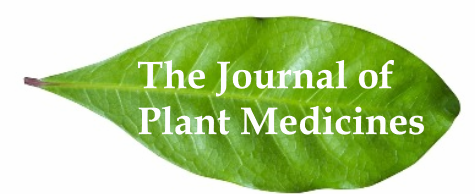Yarrow: 18 Medicinal Uses
Yarrow is a common herb with many extraordinary medicinal benefits. What is yarrow and how is it used?

In this article
Appearance and Habitat
Yarrow is an herbaceous plant with feathery, fern-like leaves and clusters of small white or pink flowers. It’s native to temperate regions of the Northern Hemisphere and commonly found in grasslands, meadows, and along roadsides.
Yarrow is known for its resilience and ability to thrive in various soil conditions, including poor or disturbed soils.
Yarrow is a perennial herb with divided, fern-like leaves. It will seasonally sprout clusters of small, white or pale pink flowers.
It commonly grows in dry, grassy areas, along roadsides, and in meadows throughout Europe, Asia, and North America.
Yarrow has a Rich History
Yarrow is an herb with a rich history of medicinal use dating back centuries.
Traditional medicinal uses of yarrow span cultures worldwide. The Ancient Greeks and Romans used yarrow for its wound healing properties. They named it after the mythical Greek hero Achilles.
Achilles apparently used yarrow to treat the wounds of his soldiers.
Indigenous peoples of North America used yarrow for various medicinal purposes. These uses included fever reduction, pain relief, and as a digestive aid.
Traditional Chinese medicine employs yarrow for a number of conditions. These include its ability to regulate blood flow, reduce inflammation, and treat conditions like hemorrhoids and menstrual disorders.
Some of its scientifically confirmed health benefits include:
Wound Healing
Yarrow has a long history of use in wound care due to its antiseptic and anti-inflammatory properties. It can help staunch bleeding and promote healing.
The herb’s astringent properties promote wound healing by helping to stop bleeding and reduce inflammation. Thus yarrow has been used topically to accelerate the healing process of cuts, bruises, and minor burns.
Digestive Health
Yarrow has been used to alleviate various digestive issues. These include indigestion, cramps, and bloating. Thus yarrow is said to have carminative and stomachic properties.
Yarrow is believed to support digestion by stimulating the production of digestive juices and bile. This effect may help alleviate symptoms of indigestion and improve overall digestive health.
Anti-inflammatory
Yarrow contains compounds like flavonoids and alkaloids that possess anti-inflammatory effects. These give it the potential potentially aiding in the treatment of conditions related to inflammation. These include arthritis and gastrointestinal inflammation.
More specifically, yarrow contains sesquiterpene lactones. These have anti-inflammatory properties.
Yarrow has been used traditionally to reduce inflammation associated with conditions like arthritis.
Fever Reduction
Yarrow is known for its diaphoretic properties, meaning it can induce sweating. This has been traditionally used to help reduce fevers and aid in detoxification.
Menstrual Support
Yarrow has been used to alleviate menstrual cramps and regulate menstrual flow due to its astringent and antispasmodic properties.
Anxiety
Yarrow has been used to calm and soothe the nerves. Research from the University of Melbourne and the University of Milan found that Yarrow has anxiolytic-like effects. The research determined that yarrow modulated the GABAA/benzodiazepine (BDZ) receptors.
Blood Pressure
Yarrow has also been found to reduce blood pressure. This is added to its ability to help purify the blood stream. These effects are likely related, as clearing the blood of radicals prevents blood vessel wall damage – and thereby helps decrease hypertension.
Liver and Kidney Health
Yarrow has been used to treat malaria, jaundice and other liver disorders, and is considered liver-protective.
A 1999 clinical study from the Ukraine illustrated Yarrow’s ability to treat and rehabilitate elderly patients with chronic cases of hepatitis.
Yarrow has also been used to treat various kidney disorders in traditional medicine. These include kidney stones, cystitis and others.
How is Yarrow used?
Yarrow can be prepared and consumed in various forms. These include steeped in water as a tea, concentrated into a tincture, or applied as a poultice.
Scientific References
Li H, Liu L, Gou G, Xin X, Li J, Aisa HA. Guaianolides from Achillea millefolium L. and their anti-inflammatory activity. Phytochemistry. 2023 Jun;210:113647. doi: 10.1016/j.phytochem.2023.113647.
Benedek, B., Kopp, B., Melzig, M. F. Achillea millefolium L. s.l. revisited: Recent findings confirm the traditional use. Wiener Medizinische Wochenschrift (1946), 2007;157(13–14), 312–314.
Kazemi, M. Phytochemical and Antioxidant Properties of Achillea Millefolium from the Eastern Region of Iran. International Journal of Food Properties, 2015;18(10), 2187–2192.
Gilani, A. H., Shah, A. J., Zubair, A., Khalid, S., Kiani, J., Ahmed, A. Chemical composition and mechanisms underlying the spasmolytic and bronchodilatory properties of the essential oil of Nepeta cataria L. Journal of Ethnopharmacology, 2009;121(3), 405-411.
Ożarowski, M., Mikołajczak, P. Ł., Bogacz, A., Bartkowiak-Wieczorek, J., Szulc, M., Kujawski, R., … Seremak-Mrozikiewicz, A. Influence of yarrow (Achillea millefolium L.) on the wound healing process. Advances in Dermatology and Allergology/Postȩpy Dermatologii i Alergologii, 2015;32(1), 21–26.
Abad, M. J., Bedoya, L. M., Apaza, L., Bermejo, P. The Artemisia L. Genus: A Review of Bioactive Essential Oils. Molecules, 2012;17(3), 2542-2566.
Akram M. Minireview on Achillea millefolium Linn. J Membr Biol. 2013 Aug 20.
Vahid S, Dashti-Khavidaki S, Ahmadi F, Amini M, Salehi Surmaghi MH. Effect of herbal medicine achillea millefolium on plasma nitrite and nitrate levels in patients with chronic kidney disease: a preliminary study. Iran J Kidney Dis. 2012 Sep;6(5):350-4.
Sarris J, McIntyre E, Camfield DA. Plant-based medicines for anxiety disorders, Part 1: a review of preclinical studies. CNS Drugs. 2013 Mar;27(3):207-19. doi: 10.1007/s40263-013-0044-3.
Vitalini S, Tomè F, Fico G. Traditional uses of medicinal plants in Valvestino (Italy). J Ethnopharmacol. 2009 Jan 12;121(1):106-16. doi: 10.1016/j.jep.2008.10.005.
Harnyk TP. The use of preparations of plant origin in treating and rehabilitating elderly patients with chronic hepatitis. Lik Sprava. 1999 Oct-Dec;(7-8):168-70.
Pain S, Altobelli C, Boher A, Cittadini L, Favre-Mercuret M, Gaillard C, Sohm B, Vogelgesang B, André-Frei V. Surface rejuvenating effect of Achillea millefolium extract. Int J Cosmet Sci. 2011 Dec;33(6):535-42. doi:10.1111/j.1468-2494.2011.00667.x.
Huseini HF, Alavian SM, Heshmat R, Heydari MR, Abolmaali K. The efficacy of Liv-52 on liver cirrhotic patients: a randomized, double-blind, placebo-controlled first approach. Phytomedicine. 2005 Sep;12(9):619-24.
Asgary S, Naderi GH, Sarrafzadegan N, Mohammadifard N, Mostafavi S, Vakili R. Antihypertensive and antihyperlipidemic effects of Achillea wilhelmsii. Drugs Exp Clin Res. 2000;26(3):89-93.





























